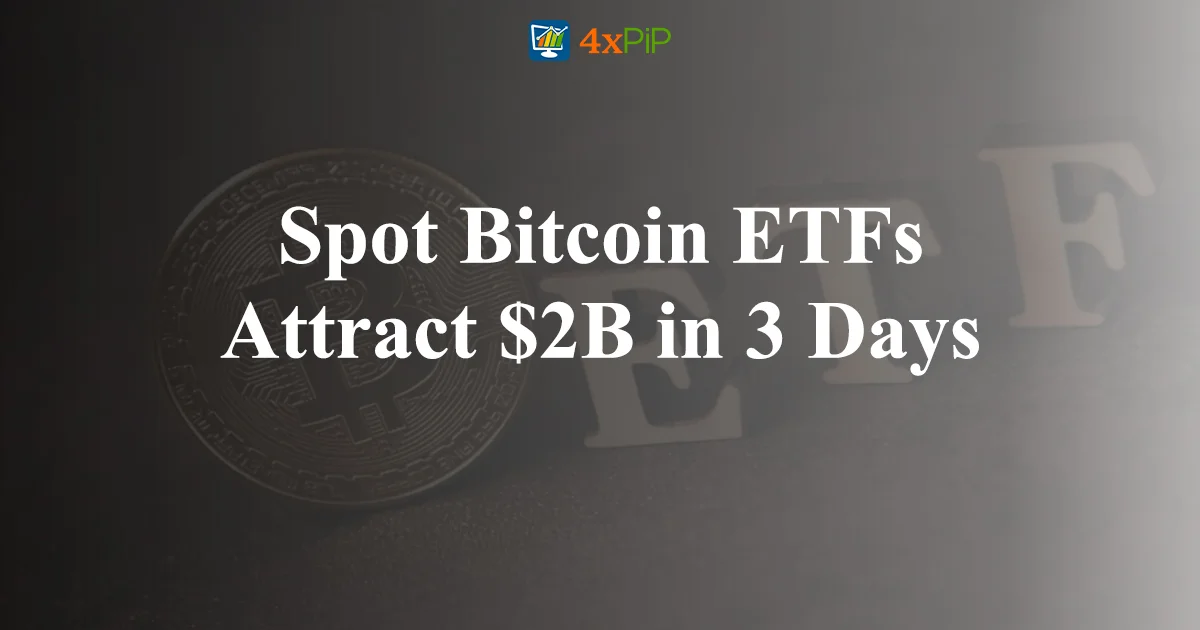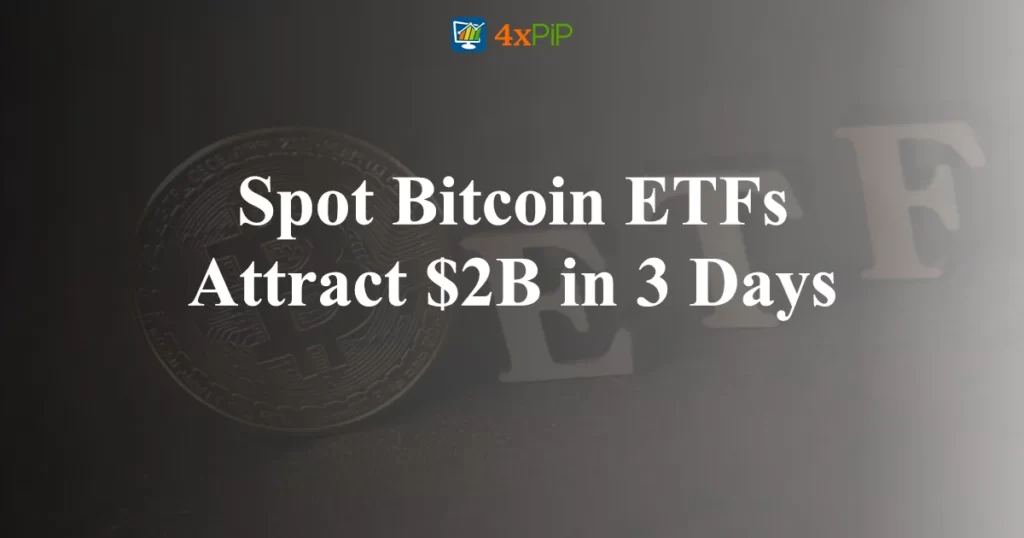In the fast-evolving landscape of cryptocurrency investments, a recent surge in interest has been witnessed as investors poured an impressive $1.9 billion into nine newly launched U.S. bitcoin exchange-traded funds (ETFs) within their first three days of trading. Among the notable contributors to this influx are industry giants BlackRock and Fidelity, capturing the lion’s share of the capital flow. This blog explores the dynamics of this groundbreaking development and delves into factors influencing investor choices. Keep an eye out for more info on this. If you’re into trading and want good tools and EAs, check out what 4xPip has by emailing [email protected].
The Inaugural Inflows:
Surpassing initial expectations, these ETFs have demonstrated a robust start, outpacing the post-launch flows of well-established counterparts like the ProShares Bitcoin Strategy ETF and the SPDR Gold Shares ETF. However, questions linger about the sustainability of this momentum in the face of Bitcoin’s inherent volatility.
Fee Wars:
Lower fees have emerged as a pivotal factor in attracting investors, with BlackRock’s iShares Bitcoin Trust ETF and Fidelity’s Wise Origin Bitcoin Fund leading the way. BlackRock’s innovative fee structure, starting at 0.12% for the first $5 billion in assets, has garnered substantial attention. The significance of fees is underscored by industry experts who predict that those with lower management fees will be more appealing in the long run.
Brand Recognition Matters:
In the race for investor attention, established brands like BlackRock and Fidelity have taken the lead. However, emerging contenders, such as Bitwise and the Ark/21Shares joint venture, are making their mark by initially waiving fees. This dynamic has prompted a shift from higher-cost options like the Grayscale Bitcoin Trust (GBTC) to more cost-effective alternatives.
Institutional Approval:
As these ETFs strive to establish themselves, the challenge lies in gaining acceptance among institutional investors; moreover, pension funds and investment advisers play a key role in this process. The noise surrounding the debut of these products is expected to settle, allowing for a clearer evaluation of their role in diversified portfolios. Additionally, industry experts anticipate that the next six months will be crucial in determining their integration into institutional investment strategies.
Summary:
In the whirlwind of activity surrounding the launch of spot Bitcoin ETFs, the initial response has been promising, with $2 billion pouring in within three days. The spotlight is now on the sustainability of this momentum, the impact of varying fee structures, and the ability of these funds to secure a lasting position in institutional portfolios. As the cryptocurrency market continues to evolve, the coming months will reveal the true trajectory of these ETFs and their place in the broader investment landscape. Stay tuned for further updates on this matter, and for reliable tools and EAs in trading, explore the offerings at 4xPip by reaching out to [email protected].
FAQs:
Why are lower fees crucial for the success of Bitcoin ETFs?
Lower fees make ETFs more appealing to investors, contributing to higher adoption rates. In a competitive landscape, cost-effective options tend to attract a larger investor base.
How do BlackRock and Fidelity stand out in the Bitcoin ETF race?
BlackRock and Fidelity have leveraged their brand recognition to attract significant inflows. Additionally, their innovative fee structures have positioned them as frontrunners in the market.
What impact have emerging players like Bitwise and Ark/21Shares had on the market?
Despite being relatively new entrants, Bitwise and the Ark/21Shares joint venture have made a notable impact by initially waiving fees. This has influenced investors to shift from higher-cost alternatives.
What challenges do Bitcoin ETFs face in gaining institutional acceptance?
The next hurdle for these funds lies in securing acceptance among institutional investors, including pension funds and investment advisers. The industry will closely watch how these ETFs integrate into diversified portfolios over the next six months.












